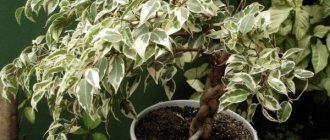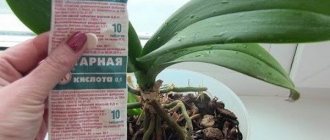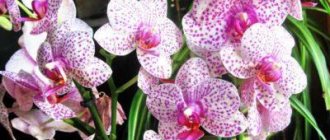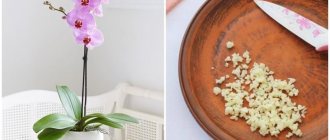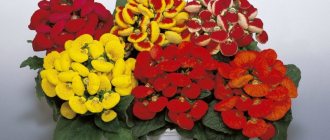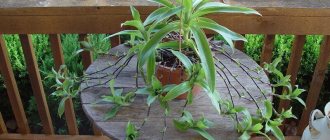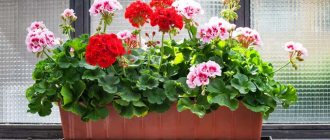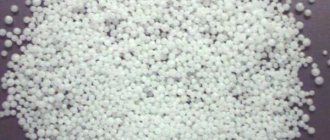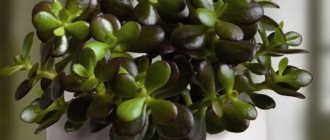The most labor-intensive process in caring for indoor plants has always been and remains watering. It takes the most effort and time, and is the most common reason that, as a result of being too busy, we are forced to reduce our collections of pets. After all, not everyone can provide full care for a dozen different species. All problems associated with regular frequent watering, as well as with the need to constantly monitor the degree of humidity of the substrate and its drying out between procedures, can be solved by containers with automatic watering. This is not just a fashionable new product on the market, but also a real find for both beginners and experienced flower growers.
Pots with automatic watering system. © lechuza
Principles of operation of flowerpots with automatic watering
If previously automatic watering was perceived as a luxurious “toy”, today pots equipped with automatic systems for regulating substrate humidity are slowly turning into one of the basic options for the full care of green pets. And whatever you call such containers - just pots with automatic watering, automatic flowerpots, smart pots - this does not change their simplicity from a technical point of view. An improved version of conventional containers solves the biggest problem and the most important task of proper houseplant care, and does it in the easiest way.
Automatic watering from a technical and technological point of view is a very simple device. In fact, this is a system of subsoil, capillary irrigation. Such pots work on the principle of communicating vessels, one of which contains water reserves, and the second is intended for planting the plants themselves. In fact, it is a double plant pot equipped with a special reservoir or a pot in which a separating barrier is installed.
Smart flowerpots can vary in design. Some pots have a cone-shaped water container, installed in the pot and connected to a tube with an indicator protruding above the surface of the pot. Others are made in the form of two vessels located one inside the other with or without a side reservoir-channel for replenishing water. Still others are collapsible structures: a special barrier-separator, an indicator tube and a reservoir for filling the lower part of the pot with water are inserted into the pot (they are supplied separately in disassembled form and are installed independently before planting the plant). At the same time, pots with automatic watering can provide for both bottom watering and water infiltration not only from below, but also from the sides of the earthen clod. The indicator is a “float” tube with marks of the maximum and minimum water levels, which are easy to navigate.
Image of a plant pot with an automatic watering system. © lechuza
Some manufacturers, along with containers and collapsible systems for automatic watering, consisting of a special barrier for the pot, a filling reservoir and an indicator tube, also provide a special drainage mixture that ensures optimal water supply and dosing. But most automatic watering systems in pots work with the most common drainage, which is usually used for indoor plants - gravel, vermiculite, expanded clay, etc.
Saturation of the substrate with moisture occurs at the capillary level; water rises into the soil from the reservoir slowly and gradually, and most importantly, evenly. From the inner container, water penetrates into the substrate as it dries, depending on the rate at which the plant consumes moisture.
A double pot with a water reservoir, from which the plant itself actually consumes as much moisture as it needs, ensures very effective, balanced hydration of the substrate. Since the moistening process is regulated by the degree of moisture consumption and the plant’s needs for it, the risk of complete drying out of the substrate or, conversely, excessive moisture and stagnation of water, acidification of the soil is completely eliminated. And you can simply not be afraid of any mistakes, miscalculations, negligence, or the influence of temporary factors. The plants will not be harmed even in your absence, if the air temperature changes sharply, etc.
Pots with automatic watering system. © lechuza
The only nuance in the operation of pots with automatic watering, which can be considered a disadvantage, is that the system begins to work only when the earthen ball is sufficiently filled with the root system, the roots of the plant reach the drainage layer and, accordingly, can “pull” water from the reservoir. If you plant indoor plants with a small root system in such a container, filling most of it with “empty” soil, you will have to wait until the root system develops and begins to “pull” moisture at the capillary level. In the case of young plants planted in large pots, you will have to wait about 2-3 months after transplantation. All this time, pots with automatic watering are used as usual and watering is carried out using the classical method. Therefore, it is advisable to use smart pots for adult plants and not to increase the diameter of the container too much compared to the previous one. But there are also models with smart watering systems that work from the moment of planting (always check this parameter when purchasing).
An inexhaustible source of moisture
A plant growing near water is distinguished by its rich greenery, lush flowering and unsurpassed beauty. Many lovers of indoor flowers also want to see a similar picture on their windows. It is pots with autofuel that are an inexhaustible source of moisture for decorative indoor plants.
For the first time, flower lovers used such an invention in Denmark, and then the idea spread to other countries. A unique system for growing indoor flowers allows you to:
- to save time;
- care for flowerpots without extra effort;
- regulate the supply of moisture to indoor flowers during personal absence;
- apply to any type of plant.
Those who already use self-watering pots have long enjoyed the floral oasis of indoor plants.
The design provides moderate watering for a period of approximately 14 days. At the same time, plants consume the amount of moisture they need, keeping their root system healthy.
Today, manufacturers offer various options for flower pots with self-watering, which vary:
- design;
- material;
- decorative painting.
In addition, the design comes with a fixed or adjustable water volume. The option is selected according to the plant or the circumstances of the flower lover. It is also important to take into account the model and operating principle of automatic watering systems for indoor plants. There are several types of such structures:
- Use of side containers. This method involves the use of double pots. The container with the indoor plant is placed in a reservoir with liquid for irrigation.
- Using the indicator. The design in the form of a cone-shaped tube with a transparent window and indicator is installed directly in the flowerpot.
- Demountable watering system. The design includes a flower pot, an indicator and a liquid reservoir.
Before choosing an automatic watering option, it is advisable to learn in detail the operating principle of the device. Knowledge of theory protects against rash decisions.
Why do you need self-watering pots?
You should not consider a container with a special device for automatically watering plants as just one of the means to simplify care, or a toy for a lazy gardener. After all, the most important thing in automatic watering is not simplicity at all, but the optimization of the procedures themselves. Such containers allow you to achieve the ideal degree of substrate moisture that corresponds to a specific period of plant development and the level of water consumption by the root system. It is the complete satisfaction of the requirements of the plants and the absolutely exact correspondence of the amount of incoming moisture to the requirements of the crops that is the main and virtually unparalleled advantage of self-watering pots. This is a smart answer to the problem of ideal watering that meets the needs of modern gardeners and their green pets, which saves energy, time, eliminates problems and prevents any difficulties associated with improper humidity conditions.
Pots with automatic watering system. © lechuza
We are accustomed to the fact that watering must be systematic, with an individual approach to each plant, regular, and maintain stable conditions. And all this must be controlled by the grower himself. Even experienced professionals cannot always provide plants with the necessary attention. And the more cultures in the collection, the more difficult it is to provide them with individual care. Self-watering pots for indoor plants, like no other method, make care more personal, focused on the characteristics and preferences of each specific plant. Thanks to them, a special system of care is effortlessly created, and the need to constantly remember and strictly observe the individual characteristics of each culture disappears.
Since all indoor plants are truly unique and inimitable, even crops belonging to the same family with similar requirements may still have a different care program. Among indoor plants there are crops that love constant humidity, such as ficus, and moisture-loving crops that depend on the degree of humidity, such as ferns and balsams, and cacti and other succulents that are afraid of any waterlogging, orchids and cyclamens that require a special approach. And if with the classic method of watering you need to find your own approach to each plant, then when using smart flower pots you just need to take care of the timely replenishment of water in the tank. They are equally suitable for the most persistent and unpretentious indoor plants that require minimal attention, and for the most capricious indoor pets, which are preferably grown in greenhouses.
Being a universal and simple device, such fashionable pots simplify the process of creating a watering program as much as possible and allow you to forget about all the hassle associated with it. Including such nuances of watering as:
- water temperature;
- water getting on leaves or bases of shoots;
- the need to drain water from trays;
- the risk of developing diseases associated with improper watering;
- requirements to control the volume of water and the level of drying of the substrate in pots, etc.
Complete set of orchid pot with automatic watering system.
© lechuza Smart flowerpots completely eliminate any risks of improper watering and compensate for all possible difficulties. Maximum efficiency, personalization, the ability to create even specific conditions and comply with all plant requirements allow you not to rely on intuition and subjective assessment, completely forget about worries and worries, and virtually eliminate the risk of failure in growing indoor plants associated with watering.
Green Apple
This brand's self-watering flower pot is equipped with wheels. Moisture is supplied from the reservoir. The automatic watering system is created from materials such as polypropylene, polyvinyl chloride or polystyrene. Thanks to a special indicator, you can regulate the water level in the tank. The pots are designed to supply plants with moisture for 2 to 12 weeks.
The product is of high quality and has an unlimited service life. The containers have different sizes, and their shapes are square, rectangular, or round. The products also differ in colors. Ceramic pots with beautiful designs and painted patterns are in demand.
The company produces balcony pots with automatic watering. Products made of durable plastic are created using modern technologies. They are durable and comfortable. When compared with products from other brands, the products of this brand are affordable, and a large assortment of types will allow you to choose the right option.
The main advantages of self-watering pots for indoor plants
- the ability to grow plants even if you don’t have enough time, you are often on the road and cannot pay enough attention to a large collection of indoor crops;
- they allow you to forget forever about problems with watering plants during vacations or long business trips;
- saving time on caring for indoor plants;
- ensuring the ideal level of humidity even without experience;
- eliminating the need to constantly check the degree of drying of the substrate between waterings;
- the ability to grow the most moisture-loving and capricious species without complex care;
- optimizing care and creating an ideal regime, ensuring the degree of soil moisture that fully meets the needs of plants.
And a little about the range of containers themselves, equipped with a built-in automatic watering system. Their selection, of course, cannot yet compare with the assortment of ordinary flower pots. But in garden centers, flower shops, and hardware stores, along with classic pots, you can almost always find several models and containers with self-watering. Unfortunately, the choice of pots in terms of style, materials, color and even size is still quite modest. Growing demand is slowly changing the situation, the range of smart flowerpots is expanding, and new manufacturers are appearing. In addition, self-watering containers already on the market are, as a rule, designed for modern interiors and allow you to choose a container that fits perfectly with any room design. Of course, there is no question of stylistic diversity, but neutral, universal forms allow you to find the ideal solution for different plants that prefer taller or wider containers, for crops of different ages and sizes.
Pots with automatic watering system. © lechuza
All self-watering containers are made of plastic, but sometimes they offer a choice not only between a glossy or matte surface, but also imitate other materials. The classic fashionable acrylic color palette and pastel shades, imitation of different textures allow you to make a choice based on decorative qualities.
Among the containers with automatic watering, there are both round and square or rectangular pots with a diameter of 13 to 45 cm. All smart large pots for voluminous plants are necessarily equipped with wheels, which make them easier to move and care for.
And at a price, smart pots allow you to find both elite and more budget options. True, the price still remains a big drawback: even the simplest smart flowerpots cost several times more than regular ones.
A separate group of containers with automatic watering consists of containers for windows and balconies, intended for planting summer gardens. Balcony elongated containers with special fastenings allow the use of smart irrigation systems even to decorate the facades of houses and balconies, terraces and recreation areas. Unlike conventional containers, the compositions created in them from annual plants and seasonal plants are easy to care for and do not require daily watering. Open air containers are equipped with a valve to drain excess water after precipitation.
Pots with automatic watering system. © lechuza
How often should you fill the tank with water?
Approximately 1-2 times a week, and more precisely, depending on the speed at which your plant drinks water. This depends on the size of the root system, the volume of the pot, air humidity and lighting. Carry out a little experiment: pour in water and wait until the plant drinks it all dry. This will answer the question of how often you should add water.
How long a 3-liter “holiday” jar will last is calculated, again, based on the appetite of your green friend. Let’s say that a plant normally drinks 1 liter of water per week. How long will it take for it to drink 3 liters?.. Well, so that the water supply is not used up too intensively, during your absence, move the plant from a brightly lit windowsill to indoor partial shade.
How to use self-watering pots?
Using a smart pot is actually no different from using a regular pot. Plants in self-watering pots are planted according to the same rules and principles as in any other container for indoor crops. Laying drainage is required. The soil is selected individually for each plant.
The lack of need for watering is immediately apparent only in some models of pots. For most flowerpots, after planting, the soil is moistened using the classic method. But when the roots of green pets reach the drainage, watering according to the classical method completely stops. In fact, instead of regular watering, you should regularly replenish the water in the reservoir inside the planter itself.
Image of a balcony planter with an automatic watering system. © lechuza
Water is poured directly into the reservoir tube, which protrudes above the wall of the pot. The procedure is very easy: you just need to add settled water suitable for irrigation to the “Maximum” indicator. Water is added much less often than regular watering, even for cacti and other succulents. In ordinary double containers for all classic indoor plants, water must be added every 2 weeks. And for moisture-loving species that need stable average humidity, the usual frequency of replenishing the water level is 10 days. But there are smart pots for which the pause between watering can be 8-10 weeks. Carefully study the manufacturers' instructions and recommendations. As in the case of regular watering, it is better to focus not on a certain frequency, but on the rate at which the plants consume moisture. Special, very convenient indicators on the tube help you monitor the water level in an open container. As with any irrigation, self-watering systems use more water in hot conditions and less in cool air temperatures. The frequency of replenishing the water level also varies depending on the time of year and the stage of plant development (as well as with regular watering).
Pots with automatic watering system. © lechuza
And one more important nuance. The first fertilizing when using containers with automatic watering can be used only 2 months after transplantation. Fertilizers are dissolved in water, which is added to the tank.
Simple tips for beginners
Self-watering flower pots are quite easy to use. Planting is done in the usual way: drainage material is placed at the bottom, and the soil is selected according to the type of flower. First, watering is carried out in the usual way. But from the moment the root system reaches the drainage, an automatic system is connected.
The tank should be filled through the tube protruding from the pot. Settled clean water is suitable. Its volume is recorded by an indicator. Fill the container to the maximum level, regardless of the type of indoor plant. As the liquid decreases, it should be replenished. For classic flowers - no more than once every 14 days, for moisture-loving plants - 10 days. It is important to take into account the time of year and air humidity in the living room. Using simple tips for using these pots allows you to create stunning green arrangements at home.
With the help of smart pots you can regularly feed your indoor plants. To do this, fertilizers are dissolved in purified water and then poured into a tank.

